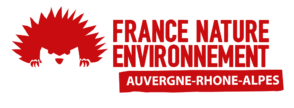Bertolino S., 2017. Distribution and status of the declining gardendormouse Eliomys quercinus. MammalReview, 47: 133–147.
Bertolino S. ;Cordero N.&CurradoI., 2003. Home ranges and habitat use of the gardendormouse (Eliomys quercinus) in a mountain habitat in summer. Acta Zoologica Academiae Scientiarum Hungaricae 49 (Suppl. 1), pp. 11–18.
Bertolino, S. ;Amori, G. ;Henttonen, H., Zagorodnyuk ; I., Zima, J. ;Juškaitis, R. ;Meinig, H. &Kryštufek, B., 2008. Eliomys quercinus . The IUCN Red List of ThreatenedSpecies 2008.
Bright PW, Morris PA., 1996. Why are dormice rare? A case study in conservation biology. MammalReview 26: 157-187.
Bussy J.,1972. Observations écologiques et hibernation des lérots (Eliomys quercinus) au cours des hivers 1966 – 67 et 1967 – 68.Bulletin mensuel de la Société linnéenne de Lyon, 41ᵉ année, n°10 : 214-216.
Filippucci, M. G., 1999. Eliomys quercinus. Academic Press, London, UK.
Pérez G. C. L ; Libois R &Nieberding C. M., 2013. Phylogeography of the gardendormouse Eliomys quercinus in the western Palearcticregion. Journal of Mammalogy, 94 (1) : 202-217
Pénel H., Faugier C.† & FaugierF., 1984. Svnthèse sur les Mammifères sauvages de l’Ardèche. Bièvre,6 (2) : 81-116.-






